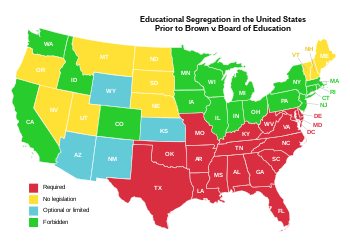
The Importance of Brown vs Board of Education
In this article, we’ll examine the historical significance of Brown vs. Board of Education and its impact on racial equality in the schools. We’ll examine the case’s implications for twenty-one states, as well as its impact on the civil rights movement. It’s a landmark case that continues to impact education today. Read on to learn more about the case’s importance. Listed below are the main points made in Brown vs. Board of Education: A Supreme Court Decision
landmark case
The landmark decision in Brown vs. Board of Education overturned Plessy v. Ferguson, which upheld segregation laws in 1896. This case had intellectual roots tied to the scientific racism of the time. Many white people had a similar set of beliefs, and the decision had popular support. The Supreme Court rejected these views in Brown vs. Board of Education, and cited social science research to back up the ruling.
There were five separate cases that were consolidated and heard by the U.S. Supreme Court. The first case, Brown v. Board of Education of Topeka, was followed by Briggs v. Elliot, Davis v. Board of Education of Prince Edward County (VA), Boiling v. Sharpe, and Gebhart v. Belton. The cases were decided in favor of the school boards, but the NAACP filed an appeal to the U.S. Supreme Court.
impact on racial equality in schools
The landmark 1954 case Brown vs. Board of Education led to a shift in how educational institutions treat students of different races. This decision led to changes in the way schools function and the resources they have. Prior to Brown, black students were underperforming on standardized tests, and many white teachers had low expectations for black students. This underperformance hampered black students’ educational opportunities. As a result, many black teachers became role models in their communities. As a result, black teachers were respected in their communities and prepared their students for a future without racial segregation.
While the case ended segregated public schools in the South, it did not end the racial divide in American schools. Although the majority of the decision’s attention was on racial equity in K-12 schools, it also opened the door to higher education. Many African American students now attend predominantly white colleges and universities. Still, African Americans are underrepresented in postsecondary education, and the climate in these institutions remains hostile to their education.
implications for twenty-one states
The landmark decision in Brown vs. Board of Education has been widely lauded by public officials throughout the United States. President George W. Bush described it as a decision “that changed America forever,” and most Senators and Representatives issued press releases hailing the decision. However, not all states have embraced the ruling. The case was not immediately halted by the Supreme Court. In Virginia, for instance, school desegregation didn’t stop until the board of supervisors ceased funding public schools.
While the case has done much for school desegregation, the legacy of Brown isn’t yet fully realized. Today, typical black students attend schools with 29 percent white students, compared to zero in 1954. Unfortunately, that progress has stalled and, in many states, the gap between white and black students is even larger. While white students have improved academically since Brown, the racial achievement gap remains huge. In 1954, there were school systems in Clarendon, South Carolina that spent four times as much as black schools – the white ones were nine times as large as black ones.
ramifications for the civil rights movement
The case of Brown vs. Board of Education has ramifications for the civil rights movement, but its implications extend much further. The decision was unanimous and came after a lengthy campaign to overturn the doctrine of “separate but equal” and allow children from different races to attend the same public school. The lawsuit was brought by Oliver Brown and his family, and the case was decided by a special three-judge court, relying on Plessy v. Ferguson. It was a victory for the NAACP, which incorporated this decision in its own lawsuits.
The case began with the Reverend Oliver Brown wanting his daughter to attend the neighborhood school, but the all-white school principal refused to let her go. Segregation laws in Kansas had imposed this discrimination and the NAACP decided to take legal action to end the segregated school system. Jim Crow laws were in place in the South and were enforced violently. This included state-sanctioned public lynchings and segregated schools.
In this article, we’ll examine the historical significance of Brown vs. Board of Education and its impact on racial equality in the schools. We’ll examine the case’s implications for twenty-one states, as well as its impact on the civil rights movement. It’s a landmark case that continues to impact education today. Read on to learn…
